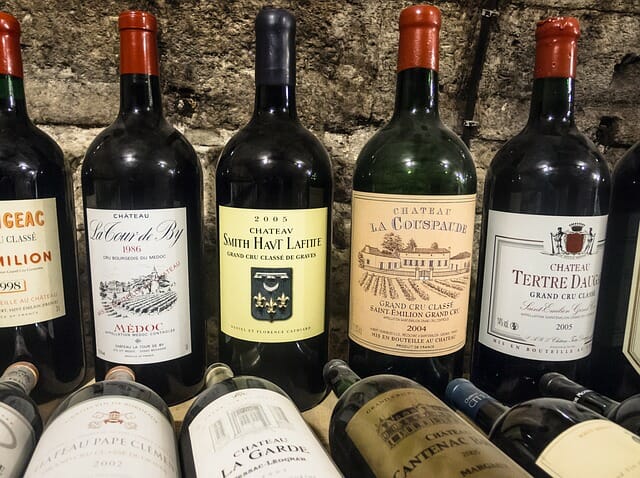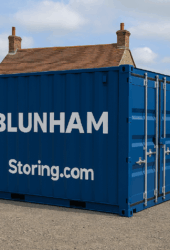Storing wine is an art, as is collecting the best wine. Read our quick tips on how to store wine bottles and what to do if you need more wine storage space.
If you collect wine and consider yourself an expert (or even just an enthusiast), then no doubt you will at some point run out of storage. You might also come across an issue with having non-uniform bottle shapes, especially if you enjoy the different varieties of wine you can buy.
This shouldn’t be something that stops you buying more bottles, or more uniquely shaped bottles, because there are plenty of storage solutions for you to help you expand your collection.

Here are our 6 quick tips to help you with storing your wine your collection
Temperature control:
Wine should be stored at a consistent temperature between 7°C and 18°C. Fluctuations in temperature can damage the quality of the wine, so avoid storing it in places with extreme temperature changes, such as near heating or cooling vents.
White wines are generally best stored at a temperature between 7°C and 13°C. This temperature range helps preserve the freshness, flavours, and aromas of white wines. Storing them at cooler temperatures than red wines is advisable because white wines are typically consumed at lower temperatures.
It’s important to note that this temperature range is suitable for long-term storage of white wines. If you plan to consume a white wine within a few weeks or months, storing it in a refrigerator at a slightly cooler temperature (around 4°C) can help maintain its freshness. However, for extended storage, a temperature range between 7°C and 13°C is recommended to ensure proper aging and development of complex flavours in white wines.
Consistency in temperature is crucial, so avoid significant temperature fluctuations or storing white wines in areas where they are exposed to heat or direct sunlight.
Proper humidity:
Wine should be stored in an environment with a humidity level between 50% and 80%. Too much humidity can lead to mould growth, while low humidity can dry out the corks and affect the wine’s aging process. Consider using climate-controlled storage to maintain the right level of humidity.
Avoid direct sunlight:
UV rays can be harmful to wine and can cause premature aging and deterioration of flavours. Store your wine away from direct sunlight or artificial light sources to preserve its quality. Darker storage areas, such as a cellar or indoor self-storage unit, are ideal.
Horizontal storage:
Storing wine bottles horizontally helps keep the cork moist, preventing it from drying out and allowing air to enter the bottle. This is particularly important for wines with natural corks. If the wine has a screw cap or synthetic cork, this is less critical, but horizontal storage is still a good practice.
Minimize vibrations:
Vibrations can disturb the sediments in the wine and impact its aging process. Avoid storing wine in areas with frequent vibrations, such as near washing machines or heavy machinery. Opt for a stable and vibration-free location.
Limited exposure to odours:
Wine can be influenced by strong odours, so it’s important to store it in an area with minimal exposure to strong-smelling substances. Avoid storing wine near chemicals, cleaning agents, or any other products with potent aromas that could permeate the cork and affect the wine’s flavour.
Remember, these tips are general guidelines. If you have valuable or rare wines, it’s advisable to consult with a wine expert such as Colucci’s or consider professional wine storage options to ensure optimal conditions.
Wine bottle shapes and sizes
Everyday wine bottles have high shoulders to the neck and go straight up and down. Most of them have the same shape and height and you will be able to store them in standard wine racks, or wine holders. A wide wine bottle is almost as common as a standard wine bottle. They have a wide bottom and the sloping of the shoulders varies depending on the individual brand or variety. Storing this type of wine bottle will need a rack or fridge with wider separating sections and racks which accommodate the sloping shoulders of the bottle.
Bottles used for champagne and other sparkling wines, such as prosecco, are more heavy duty, thicker and generally more bulky than a standard wine bottle. The pressure inside the bottles is also higher because of the carbon dioxide (CO2) gas that creates the signature bubbles. This high internal pressure within the bottle helps sparkling wine bottles withstand this pressure without exploding or leaking. The thicker glass of sparkling wine bottles also helps protect the wine from external light, air, and potential temperature variations
You will also come across tall wine bottles which tend to be made by particular companies or made in celebration of a certain event. They are also used for extra large quantities where more wine is held compared to a standard 750ml bottle. In terms of storage, this type of bottle is very delicate so has to be housed appropriately. And some producers use curved oval bottles which have flat sides and a short neck. The two sides of the bottle are curved. These types of bottle are unlikely to be stored in a typical rack because of their shape and instead would need a suitable shelving or boxed environment.
Packing Wine
As well as storing wine correctly it is important to also pack it correctly when moving it. It is most at risk when it is in transit, just like any glass object or anything delicate. Preparing your self storage unit before you transport your wine is a great idea to ensure you can place the wine directly where you want it to be. When moving it, be sure to go the extra mile to pack it correctly, using separators and soft materials to wedge the wine so it doesn’t move around. Once placed in your self storage unit you can take pleasure in creating a directory of where the different wines you have are, when you bought them, how much for, what their vintage is and so on.
Happy collecting!
ALWAYS-LOW COSTS
See how much you can save on self storage costs
COMPARE PRICES




